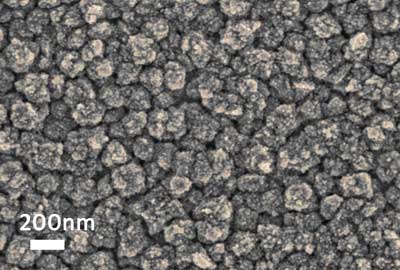Nanosponges: Porous Nanostructures for Drug Delivery, Water Treatment, and Beyond
What are Nanosponges?
Nanosponges are highly porous nanostructured materials with a sponge-like morphology. They are typically composed of a three-dimensional network of interconnected nanopores, which gives them a large surface area and the ability to absorb, encapsulate, or bind various substances. Nanosponges can be made from a variety of materials, including polymers, carbon, silica, and metal oxides, depending on the desired properties and applications.

Synthesis of Nanosponges
Nanosponges can be synthesized using various methods, depending on the desired material and properties. Some common synthesis techniques include:
- Emulsion Polymerization: This method involves the polymerization of monomers in an emulsion to form a porous polymer network. The pore size and structure can be controlled by adjusting the composition of the emulsion and the reaction conditions.
- Sol-Gel Process: In this method, a sol (colloidal suspension) is formed from precursor materials and then undergoes gelation to create a three-dimensional network. The resulting gel is dried to obtain the nanosponge structure.
- Template-Assisted Synthesis: This approach uses a template, such as a porous material or a self-assembled structure, to guide the formation of the nanosponge. The template is subsequently removed, leaving behind the porous nanosponge structure.
Properties of Nanosponges
Nanosponges possess several unique properties that make them attractive for various applications:
- High Porosity: Nanosponges have a highly porous structure with a large number of interconnected nanopores. This high porosity leads to a large surface area, which enhances their ability to interact with and absorb various substances.
- Tunable Pore Size: The pore size of nanosponges can be tailored by controlling the synthesis conditions and the choice of materials. This allows for the selective absorption or encapsulation of molecules based on their size.
- Versatile Functionality: Nanosponges can be functionalized with various chemical groups or molecules to impart specific properties or target certain substances. This functionalization can be achieved through surface modification or by incorporating functional monomers during the synthesis process.
- Biocompatibility: Many nanosponge materials, such as cyclodextrin-based polymers, are biocompatible and non-toxic, making them suitable for biomedical applications.
Applications of Nanosponges
Nanosponges have found applications in diverse fields due to their unique properties and versatility:
Drug Delivery
Nanosponges are extensively studied for drug delivery applications. They can encapsulate poorly soluble drugs, protect them from premature degradation, and provide controlled release at the target site. The porous structure of nanosponges allows for high drug loading capacity and sustained release profiles. Additionally, functionalized nanosponges can be designed for targeted drug delivery to specific tissues or cells.
Water Treatment
Nanosponges can be used as efficient adsorbents for the removal of contaminants from water. They can effectively absorb organic pollutants, heavy metals, and other harmful substances due to their high surface area and selective binding properties. Nanosponges can be easily separated from the treated water and regenerated for reuse, making them a sustainable and cost-effective solution for water purification.
Catalysis
Nanosponges can serve as supports for catalytic nanoparticles, providing a high surface area and porous structure for efficient catalytic reactions. The confinement of catalytic species within the nanopores can enhance their stability and selectivity. Nanosponge-supported catalysts have been explored for various applications, including chemical synthesis, energy conversion, and environmental remediation.
Sensing and Detection
Functionalized nanosponges can be used as sensitive and selective sensors for the detection of various analytes, such as gases, chemicals, and biomolecules. The porous structure of nanosponges allows for the efficient diffusion and interaction of the target analytes with the functional groups, resulting in measurable changes in optical, electrical, or mechanical properties. Nanosponge-based sensors have potential applications in environmental monitoring, food safety, and medical diagnostics.
Challenges and Future Perspectives
Despite the promising potential of nanosponges, several challenges need to be addressed for their widespread application. One of the main challenges is the scalability and cost-effective production of nanosponges with well-defined properties. The development of robust and reproducible synthesis methods is crucial for the commercialization of nanosponge-based products.
Future research in nanosponges will focus on the development of novel nanosponge materials with enhanced performance and functionality. The integration of computational modeling and machine learning techniques will aid in the rational design and optimization of nanosponge structures. Additionally, the exploration of multi-functional nanosponges and their integration with other nanomaterials will open up new possibilities for advanced applications in various fields.
Further Reading
BioNanoScience, Versatile Applications of Nanosponges in Biomedical Field: A Glimpse on SARS-CoV-2 Management
Journal of Drug Delivery Science and Technology, Engineered nanosponges as versatile biodegradable carriers: An insight
